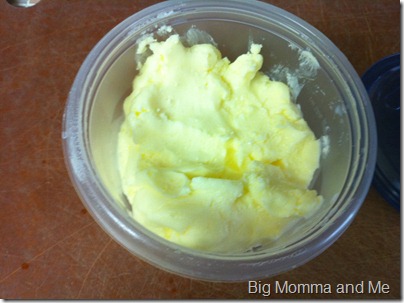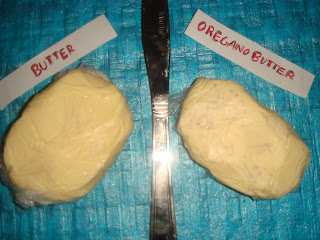
Happy August everyone! Can you believe that summer is winding down?
We have two cheesy challenges this month, or dairy challenges I should say. One long term project -
Colby Cheese and one short-term challenge -
Cultured Butter!
It's going to be a fantastic and dairy-licious month, Heather has set up a thumbnail linky for all your cheesy challenges for August
here.
Recipes are below, use the ones we provide or your own.
Happy Cheesing!
Colby Cheese
Glengarry Cheesemaking
Batch size:
12 litres (milk)
Expected yield: 1.2 kg
Milk source: Whole milk, raw or pasteurized
Production time: 2 and ¾ hours
Warm milk to 30 degreesC.
Add ¼ tsp of annatto cheese colorant diluted in ¼ cup of cool water to the milk. Mix in well using the top and bottom stir technique.
Add 200 ml prepared mesophilic starter culture or ½ tsp of powdered culture directly into the milk pre-mixed in a little milk from the cheese pot. Mix in well.
Allow the milk to ripen for 1 hour at 30 C, using the warm water bath to ensure constant temperature.
Add 1 tsp of liquid rennet diluted in ¼ cup of cool water mixing well into the milk using the top and bottom stir technique. Maintain temperature at 30C during renneting. The milk should set in 30-45 minutes.
Test the curd for a clean break, then proceed to cut the curd into ½ inch cubes. Stir gently while reducing the curds and at the same time proceed to cook the curds over the next 40 minutes to reach a temperature of 40C. Stir during the entire cooking process to avoid matting of the curds. The curds will reduce in size to the equivalent of half a peanut. Once the final cook temperature has been achieved, hold the curds at this temperature for 15 minutes.
Proceed to "wash" the curds by removing whey until you have reach the levels of the curds. Replace the whey with warm tap water at the same temperature as the whey (40C). Stir the curds gently so that they float freely in the whey/water mixture. Hold them in the diluted whet for another 15 minutes.
Allow the curds to settle to the bottom of the pot and then drain them in a cheesecloth lined colander. Drain for approximately 5 minutes.
Transfer the drained curd to a lined hoop press and press moderately for 1 hr.
Remove the cheese from the press and dress the entire cheese with cheesecloth. Press firmly for 12 hrs or overnight.
Remove the cheese from the press and float it in heavy brine for 24 hrs. Heavy brine consist of 6 cup of coarse salt in 4 litres of boiling water.
Remove the cheese from the brining pail and air dry at room temperature until the cheese rind feels dry.
Coat the cheese with cream wax and transfer it to a ripening area for at least 4 weeks. Hard wax this cheese approximately 2 weeks after production date. This cheese will not get excessively sharp if ripened longer. Ideal ripening conditions are 10-12 C with relative humidity of 75-90%.
This is a wonderful grating and melting cheese and it combines well with other cheeses to create nice blend flavors. It is a very good cheese for beginners to make as it can be eaten soon after production. The flavor is related to the taste of a mild cheddar.

And for our second dairy adventure this month, we are joining in with
Gaarp in making
Cultured Butter! If you are on Facebook, you can also join in the cultured butter party
here.
Cultured Butter
Ingredients
- One quart heavy cream
- 1/3 cup whole milk yogurt (make sure whatever you use doesn’t contain any gums or stabilizers)
- Salt, to taste
Directions
- Mix the cream and yogurt in a clean glass or ceramic bowl. Avoid plastic, which can harbor bacteria in any scratches or imperfections. Cover and let rest for 12 -18 hours, until the mixture has thickened slightly and tastes somewhat tangy. If your room is cool (i.e., less than the mid-70s), it may take longer to culture.
- Once the mixture has cultured, cool it slightly by placing in the refrigerator for an hour or so, or by submerging the bowl in a sinkful of ice water for a minute or two. The ideal temperature is around 60° F.
- Prepare a bowl of ice water, which you will use to clean the butter.
- Put the cream mixture in a mixing bowl. If using a stand mixer, use the whisk attachment. Beat the mixture on high until stiff peaks form, then reduce the speed to low. Watch closely at this point, as the cream mixture will soon break, separating into butter and buttermilk. If you have a splash guard on your mixer, you might want to use it so you don’t have buttermilk flying everywhere. Once the mixture breaks, turn off the mixer.
- Pour the buttermilk into a clean container. You can use this just as you would commercial buttermilk for drinking or baking. If you aren’t going to use it within a week or so, it can be frozen and used later for baking.
- Press the butter with a spatula, spoon, or your hand to remove as much buttermilk as possible.
- Pour water from the bowl of ice water over the butter to cover. Rinse the butter by kneading it under the water, then dump off the water. Continue to add water and rinse until the water you pour off is clear. It is necessary to remove all the residual buttermilk in order to keep the butter from spoiling too quickly.
- Once the butter has been cleaned thoroughly, knead it on the counter for a minute. If you want to salt the butter, press the butter out on the counter, sprinkle lightly with salt, then knead it in. To store the butter, you can press it into ramekins or, as I prefer, roll it into logs. Cover the ramekins or wrap the logs tightly in plastic wrap. If you make two butter rolls, you can freeze one for later use.
Yields two cups buttermilk and about 12 ounces butter.




















































